 Michelangelo Foundation
Homo Faber
Biennial
Guide
NextGen
Michelangelo Foundation
Homo Faber
Biennial
Guide
NextGen
 The Foundation / Reflections
Posted on July 8, 2020
A Well Crafted Life
by Franco Cologni
The Foundation / Reflections
Posted on July 8, 2020
A Well Crafted Life
by Franco Cologni
When I take the time to ponder on what constitutes A Well Crafted Life, a myriad of elements come to mind which need to all balance harmoniously. The objects which you collect in your homes, that together make up a design aesthetic; the people you surround yourself with; every aspect of life deserves careful consideration, appreciation and a conscious approach. If we reflect on the reason, we immediately connect a greater meaning to the objects we select, the places we visit, the experiences we sign up to and the people we encounter. When you purchase a handcrafted object, you are drawn not only into an artisan’s personal story but also into a collective cultural heritage, which represents years of passion, dedication and the patient transmission of knowledge. This deeper connection with our past and our future through collecting objects is fundamental to appreciating craftsmanship and recognising its significance. Not only is fine craftsmanship synonymous with high quality, it is also closely entwined with human values. These values are more important today than ever, to cherish, to connect and to celebrate human talent and the ability to build extraordinary pieces from the natural materials of our beautiful earth. An artisan’s approach to their work is a deliberate one, a soulful one – each hand gesture must be careful and precise – executed at an exact moment, the use of tools requires great skill and practise, then the creative imagination must work in harmony with the hands and the craft mastered to such a level that an artisan can then innovate. We are proud to work with an exciting array of artisans, whose creativity is enabling them to carry forward into the future both tradition and novelty, in exceptional ways. A life well crafted, so, is one that looks to tradition and heritage for inspiration, but to human creativity and curiosity for new solutions, thus enabling us to always move from vision to perception. And meaning.
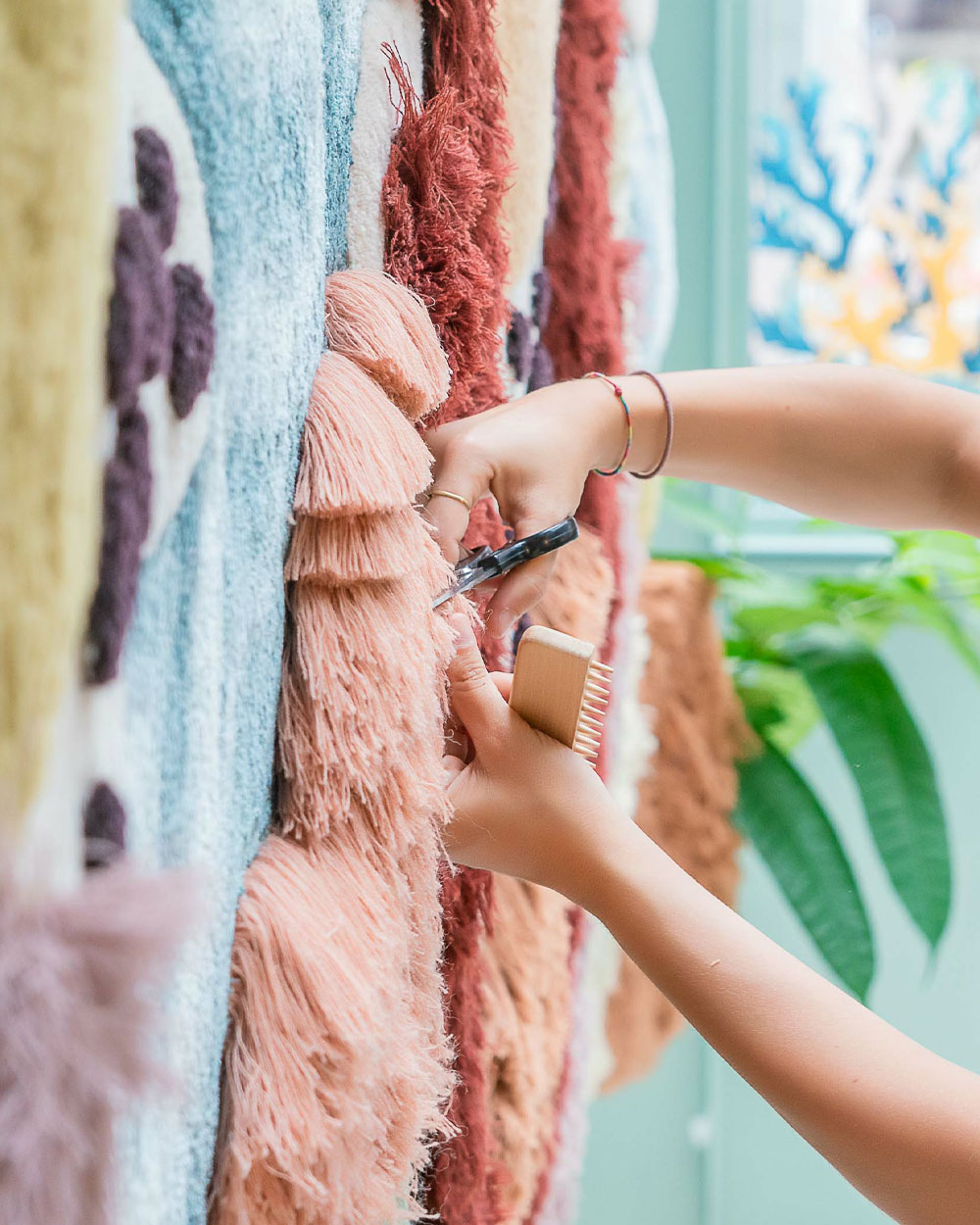 The Foundation / Reflections
Posted on May 5, 2020
Curiosity and Creativity
by Franco Cologni
The Foundation / Reflections
Posted on May 5, 2020
Curiosity and Creativity
by Franco Cologni
As spring blooms and we start to see a glimmer of hope and flicker of light at the end of this dark tunnel, I would like to reflect on this moment in time.
A moment in time that has already been very marked for so many. Whether you have loved ones affected, friends or family on the frontline, or are simply adjusting to a new life at home, we are all touched in different ways by this pandemic.
My first reflection is on the necessity to show gratitude. To be grateful for those saving lives, for our human capacity to adapt, for the basic necessities we have and for those who continue to give hope during a darker time in our lives.
Which leads me to my second reflection on hope. For me hope arises from a vision of a better future, from a belief in the creativity, curiosity and resourcefulness of humankind. These attributes are often embodied in craftspeople, and I am grateful for their human skills, life philosophies and capabilities to transform our modern landscape and bring beauty to our daily lives.
My last reflection is on time. Artisans understand the preciousness of time. Their detailed and precise way of working requires time and the efficient use of it. There are no shortcuts to creating pieces of excellence. Often the making of a masterpiece is the accumulation of a lifetime of experience.
We can use this time to redefine our raison d’être. To learn and cultivate a new skill, explore in greater depth a compelling subject, to look curiously for ways to bring creativity into all aspects of our lives. As time stands still, it brings a lot into focus.
We are living in uncertain times, with that comes many new possibilities. With new fertile ideas and a leap of a faith, we can embrace a brighter future led by human creativity. I hope this time will help to reawaken our sensitivity and curiosity for our human capabilities as a community of creators, designers, and enthusiasts. And that we remain united by our shared human experiences, our shared passions and visions.
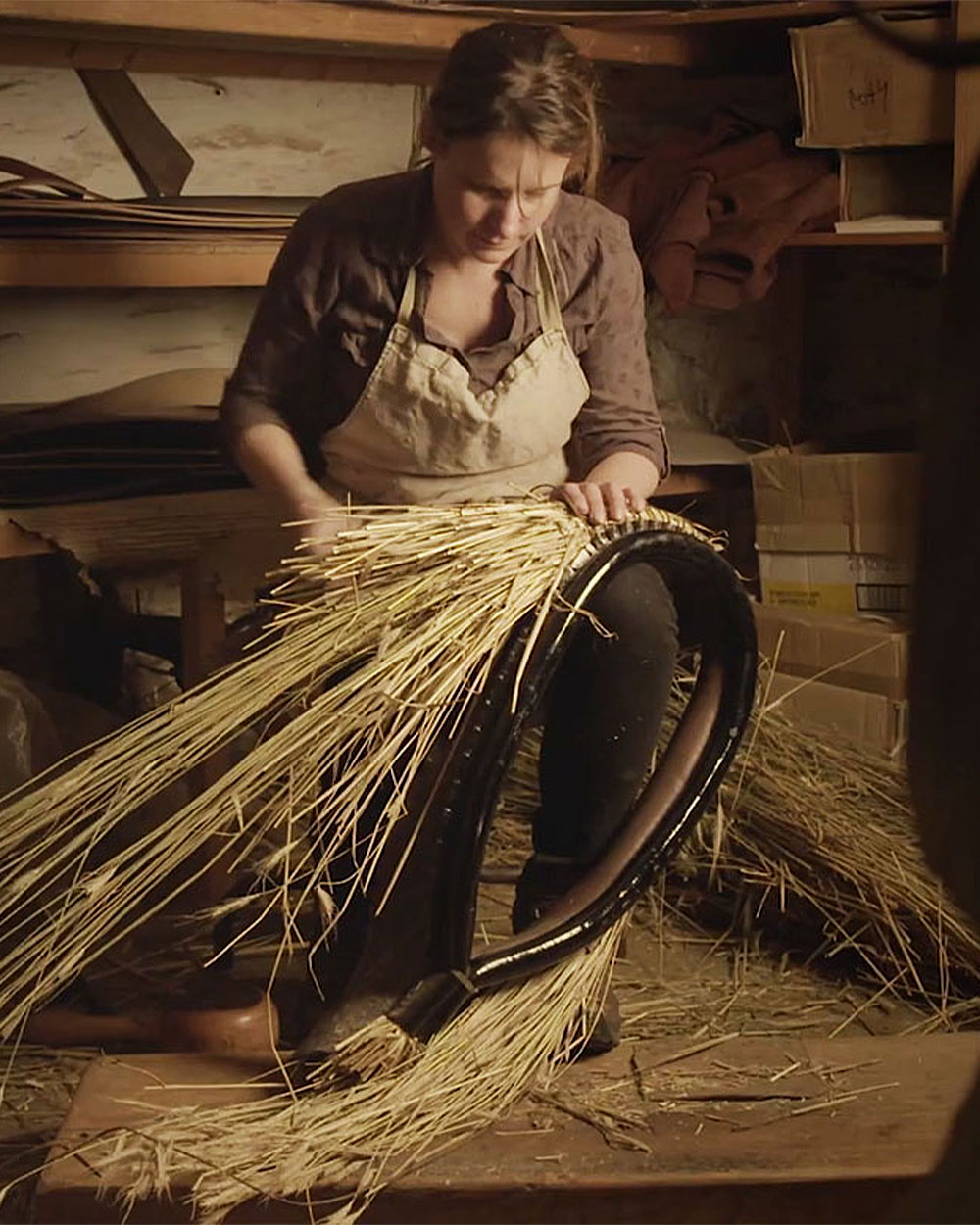 The Foundation / Reflections
Posted on March 4, 2020
A European Red List of Endangered Crafts
Franco Cologni
The Foundation / Reflections
Posted on March 4, 2020
A European Red List of Endangered Crafts
Franco Cologni
When we think of ‘endangered’ it tends to evoke endangered species on our planet; whether that be plants or animals. Yet, too rarely do we reflect on endangered human skills, in this case particular craftsmanship savoir-faire that plays an integral role to a country’s cultural heritage.
As the sophistication of machines and technology continue to distance our connection with the earth and its natural elements, so too does it distance the role of human hands in transforming primary raw materials, using inherited skills, into both artistic and functional objects.
In a quest to safeguard these precious human skills at risk of disappearing, the Michelangelo Foundation has launched an initiative in partnership with Heritage Crafts Association, United Kingdom to extend the HCA Red List of Endangered Crafts to a European level. This initiative looks optimistically to a future in which rare and unique craftsmanship is ushered safely into a new contemporary realm. Not only does it seek to identify, classify and protect craftsmanship around Europe but also to revitalise it by promoting inventive and creative approaches.
We are very grateful to both the Heritage Crafts Association for being the trailblazers of this significant quest and to our wide network of European members whose participation will ensure that we can localise endangered crafts across the continent and as a result take the necessary steps towards a more human future.
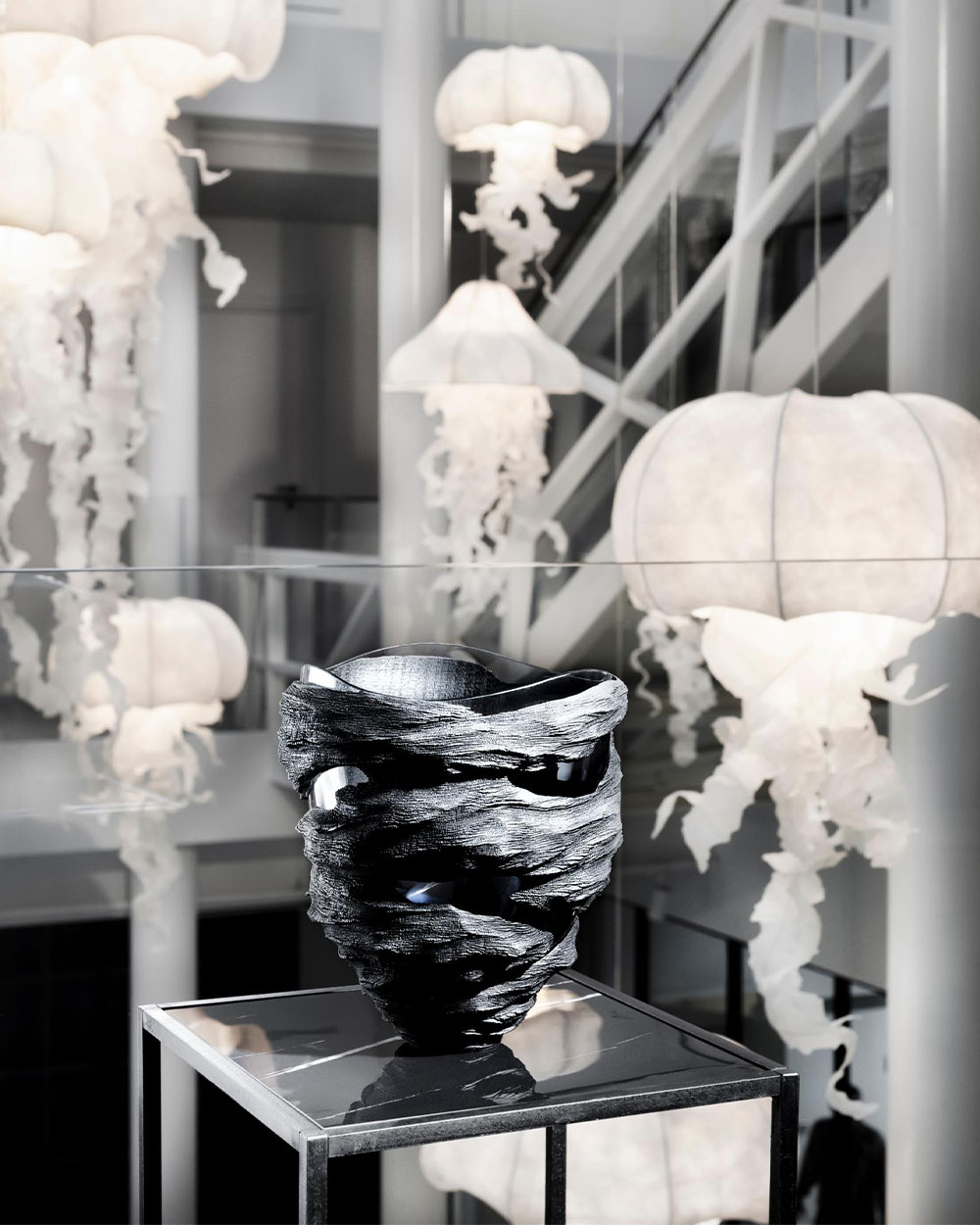 The Foundation / Reflections
Posted on December 5, 2019
A Beacon for Fine Craftsmanship
Franco Cologni
The Foundation / Reflections
Posted on December 5, 2019
A Beacon for Fine Craftsmanship
Franco Cologni
My heartfelt thoughts turn to Venice in the wake of the recent damage caused by the high tides, city of the Foundation’s heart, home to Homo Faber and many cherished artisans. The Michelangelo Foundation has pledged to participate in the Support Venice campaign launched by Venetian Heritage, which aims to restore the impacted Venetian patrimony - artistic and cultural heritage and architectural treasures, it is through the savoir-faire of skilled artisans that restoration projects can be carried out so that the rich artistic legacy of Venice is preserved for the future.
The Venetian artisans now critically need our support to rebuild their working studios, salvage their traditional tools and continue their businesses. Venice’s artisanal legacy rests on their shoulders and it is our ongoing quest to protect artisans, to ensure they have the possibilities to continue to craft and create, to increase their public visibility, and to value their skills and exquisite objects - the fruits of their dedication, passion, and love. Without the colourful patchwork of Venetian artisans, Venice would be but a ghost of its former self, it is crucial to protect these custodians of the Venetian cultural heritage –the living treasures of the city – the human embodiment of Venice’s artistic legacy.
The Michelangelo Foundation new headquarters at the ‘Arcades des Arts’ on Pont de la Machine, Geneva, are also on water. Here we continue to strive to put artisans at the forefront of our daily activities, to give them a voice and a platform to not only ensure they survive, but that they thrive and in doing so pass on their age-old techniques to new generations. Reflecting on a new dawn for this special location in the heart of Geneva’s centre, I hope that the space will be a beacon for fine craftsmanship, illuminative not just in a physical realm but also in an intellectual one; immersing its visitors in the world of excellent craftsmanship where tradition meets innovation, and creativity meets craftsmanship. It is at these intersections that true mastery of a craft emerges, and it is our mission to promote and perpetuate such fine craftsmanship, strengthen its links with the world of design, and ensure its sustainability. In a nutshell, the ‘Arcades des Arts’ will honour the beauty of fine workmanship and the knowledge that guides it.
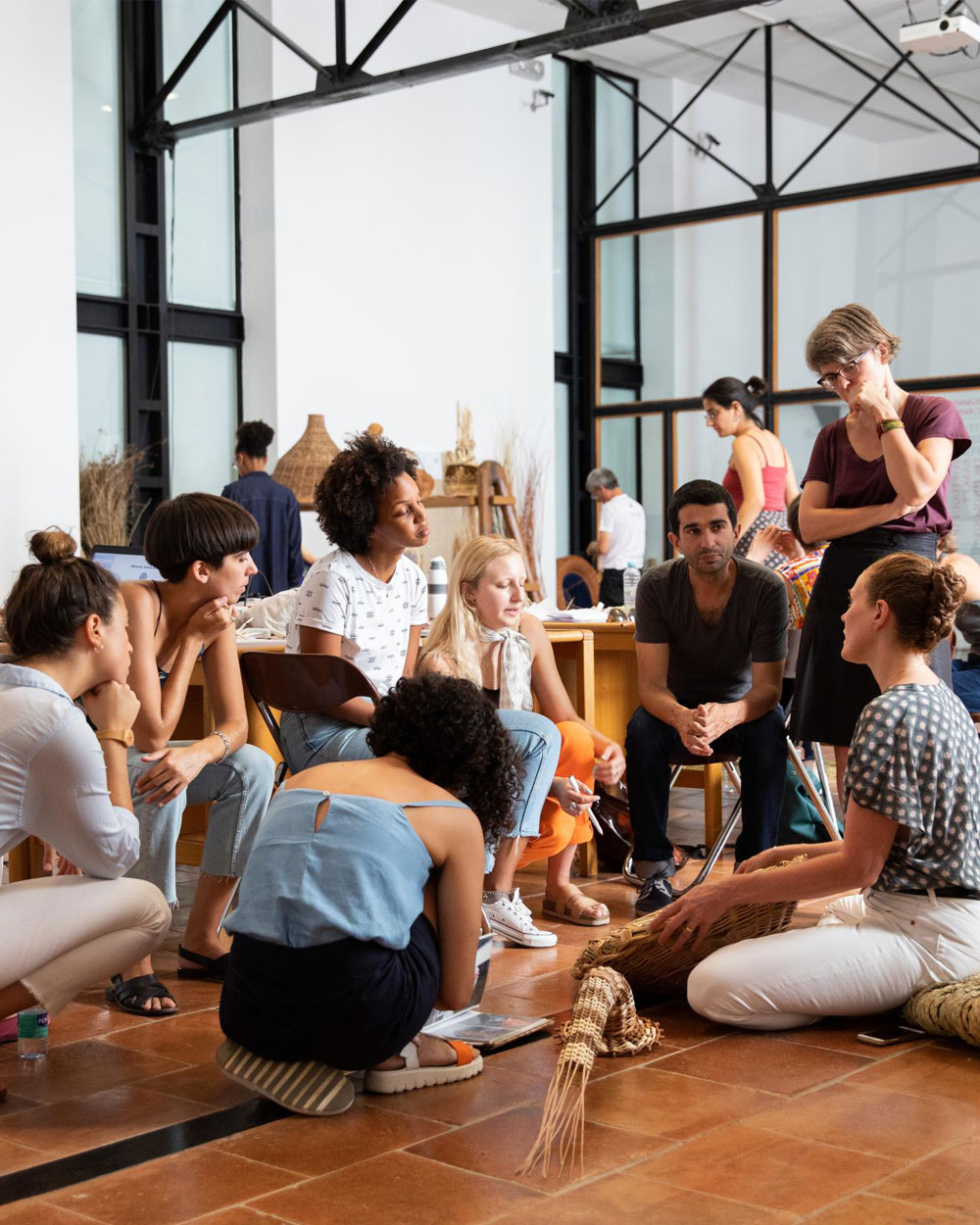 The Foundation / Reflections
Posted on October 30, 2019
The Ready Hand
by Franco Cologni
The Foundation / Reflections
Posted on October 30, 2019
The Ready Hand
by Franco Cologni
The transmission of knowledge from a master to a young artisan is a very human act, but it evokes a celestial image by Michelangelo on the ceiling of the Sistine Chapel – God’s hand reaching toward Adam’s, endowing him with life. When I think about ensuring the future of fine craftsmanship, I picture a similar spark of energy that must pass from the hands of today’s masters to those of the next generation. At a time when technology often replaces the human touch, it is an urgent task.
A career in fine craftsmanship is a great calling. To spend one’s working hours creating things of great beauty and utility is indeed to touch the divine. It is hard work, but it is deeply meaningful: it connects to centuries of tradition and reflects our cultures and our enduring values. It is also economically vital: master artisans are at the centre of many of our industries – from furniture to fashion – where they often produce the most innovative and acclaimed work. It is master craftspeople who bring their deep knowledge of materials and method to make real not only their artistic vision, but that of the world’s best designers.
Moreover, there is rising appreciation for and interest in work made by hand, perhaps in response to increasing digitisation and the sheer speed of our twenty-first century lives. Many of Europe’s art and design schools are offering innovative training for aspiring artist-artisans, combining hands-on learning in crafts workshops with history, theory and design in the classroom. We must elevate these opportunities. One way we are doing that at the Michelangelo Foundation is to include these leading institutions in our network and featuring their graduates in our programmes.
This past summer we witnessed a beautiful convergence in which the Michelangelo Foundation’s Summer School brought graduates of many of these fine schools – artisans and designers alike – to spend time in European ateliers working side by side with masters as they demonstrated hot glass sculpture or intricate techniques of basket weaving and tapestry making.
Another opportunity to meet and be inspired by master artisans is our Young Ambassadors programme in which dozens of students from Europe’s leading training institutions take part in Homo Faber, our biennial showcase to master craftsmanship in Venice. I am heartened by these young people, who gain a wider sense of what’s possible and leave Homo Faber knowing there is great value in learning from the masters.
The transmission of know-how from master to pupil often takes place less formally, in the intimate space of an atelier or workshop. In these apprenticeships, a young artisan spends many hours alongside a master learning by doing, gesture after gesture. This time-tested process of transmission is also worthy of our support. One thinks of the Compagnons du Devoir, a tradition of apprenticeship which dates back to Medieval times in France. Over the course of several years, trainees travel from community to community to apprentice with master artisans. Notably, at the end of their training, the Compagnons pledge to pass their expertise to a new generation.
The path to mastery is a long one, and if we are to promote this journey, we must know more about just what it is that makes a master. An inspiring place to start is with Michelangelo himself. Writing in a poem some 500 years ago, he suggested that the artist-artisan must employ “both mind and hand”:
Only after the intellect has planned
The best and highest, can the ready hand
Take up the brush and try all things received.
As he suggested, to create as an artist-artisan is to embark on a complex journey. Fortunately, there are clear signposts along the way that can help us prepare the path. In 2017 the Foundation published a book, The Master’s Touch, which lays out the essential elements of artisanal excellence. Led by Alberto Cavalli, the research reveals eleven key criteria that make a master, from competence to authenticity and interpretation. The findings were confirmed and enriched in many conversations with artistic masters from a range of disciplines. I will mention two of the criteria here because they directly relate to the transmission of know-how to the next generation of masters.
First is training, the art of teaching, inspiring and building future craftspeople. A master recognises potential in aspiring artisans and is able to develop their talent and nurture their knowledge. Mastering this area of excellence requires not just a thorough knowledge of one’s discipline, its tools and techniques, but cultivating a maturity for collaboration and teamwork and an openness to continuous learning on the part of the master as well as the pupil.
The other area of excellence related to transmitting mastery is tradition. But it’s not about preserving a past in resin but creating a vibrant future – breathing new life into a precious tradition. It’s about helping students see and feel the beauty and possibility of using the finest materials and centuries-old techniques in new ways. It is about the renewal of this know-how as it is taken up by new talent with great skill – and a ready hand.
References
Cavalli A. with Comerci G. and Marchello G. The Master’s Touch: Essential elements of artisanal excellence. Venice: Marsilio, 2018.
Cologni F. “La regola e la passione del sapere” (The rule and the passion of knowledge), in Fondazione Cologni dei Mestieri d’Arte and Fondazione Deutsche Bank Italia, La regola del talento: Mestieri d’arte e Scuole italiane di eccellenza (The rule of talent: The artistic crafts and Italian schools of excellence). Venice: Marsilio, 2014.
Tusianai J. The Complete Poems of Michelangelo. New York: Noonday Press, 1960:146-147.
 The Foundation / Reflections
Posted on September 26, 2018
Franco Cologni's inaugural speech
by Franco Cologni
The Foundation / Reflections
Posted on September 26, 2018
Franco Cologni's inaugural speech
by Franco Cologni
Oh, what a beautiful day…
This is my welcome to all of you.
In Italy we use the word “bello”, beautiful, to mean a lot of things: and I use this adjective, today, to invite you to enjoy this “beautiful day” on this magic island. The world is living in difficult times, but today we want to tell a beautiful story: beautiful because it’s a true story, a tangible one.
Here, from Palladio onwards, many prominent artists and artisans have left unique signs.
Here today we discover spaces and places conceived by excellent experts, where hundreds of creations crafted by master artisans are presented, from dozens of Countries.
Here today we inaugurate Homo Faber, highlighting again this fil rouge of creativity and craftsmanship that has crossed the centuries to come to us.
Homo Faber is not simply an exhibition, similar to many other very good ones, already done.
It’s not a moment to celebrate or indulge.
It does not have an immediate commercial purpose.
It’s not for marketing and advertising.
Homo Faber is a cultural investment dedicated to beauty, to a lasting – and not an ephemeral – beauty.
Homo Faber is the narration of a humanity that looks at the future with optimism, because talent, which can be found in all the countries, allows us to transform the ideas of today in the forms of the beauty of tomorrow.; and Homo Faber is a story dedicated not to one, but to many talents.
Homo Faber is our little contribution to history, offering the vision of a contemporary heritage of materials, objects and histories: the history of mankind is a history of objects but also of ideas and passions.
In such a difficult moment for the world, here, in this island, we speak about beauty and talent, of all that human hands can do better than any machine, as Johann Rupert anticipated: we speak about hands, hearts and hands that live with the passion for making, and making well.
In the very name “Homo Faber” there is the programme of what we do: homo faber is the man maker of his destiny, thanks to his talent and passion. It’s not the homo homini lupus (man as a wolf to other men), but the man who creates a better world for himself and other men too, leaving a signature on what he does.
Fine craftsmanship is not something belonging to one Country only: it’s a heritage of humanity. This is why Homo Faber has been conceived as an international exhibition: this edition is dedicated to Europe, from Açorras to Russia and from Iceland to Sicily. The next one, as our chairman announced, will encompass the artisans of the world.
Homo Faber, thus, is the beginning of a path that will be articulated around two points:
1. A more and more international and articulated network. Because only from the exchange of ideas and experiences can be born that cultural movement that will bring effective value to craftsmanship and creativity. Today the Grand Tour is no more what it used to be in the 19th century: nowadays talents have to be discovered but they also have to move, to be acknowledged from a wider public to be properly sustained.
2. An important “net” for the master craftsmen, to offer them visibility, promotion and the opportunity to transmit their know how. It is necessary to train a new generation of master artisans, abel to speak the language of a world in constant change.
The real enemy of this world, that we have defined “beautiful”, is not technology or speed: the enemies are ignorance and homologation. These are the enemies we want to fight and defeat, as Saint George does with the dragon, here on the Basilica.
This island is the island of tomorrow: or a more human future.
Here you will find variety, passions, commitment, work: the “tools” of every artist and craftsman.
Wasn’t I right, in the beginning, to start by saying that this is a beautiful day? And I finish with the same refrain, as if this were just an ouverture of an opera that is about to be revealed.
Thanks to everyone.
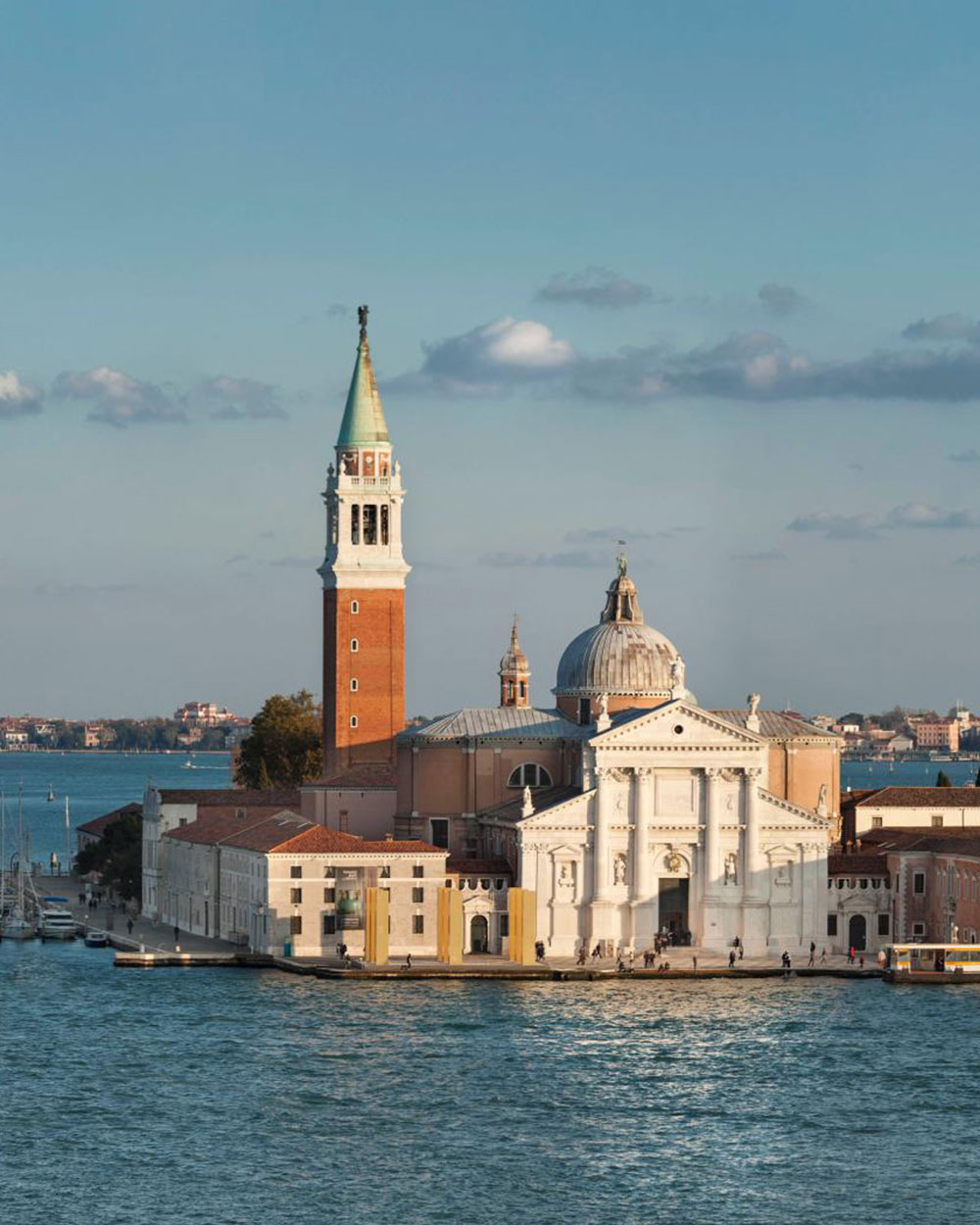 The Foundation / Reflections
Posted on September 26, 2018
Johann Rupert's inaugural speech
by Johann Rupert
The Foundation / Reflections
Posted on September 26, 2018
Johann Rupert's inaugural speech
by Johann Rupert
Thank you President Giovanni Bazoli, President of the Fondazione Giorgio Cini and Mr Brugnaro, Mayor of Venice. Mr and Mrs Meyers of the Fondation Bettencourt Schueller, thank you very, very much for your support, and Mr Boeri, President of the Triennale di Milano, grazie. And, of course, thank you to my old friend Dr Franco Cologni.
Thanks also go to the European Parliament for their patronage, and most especially to our four main partners: the Fondazione Giorgio Cini, the Fondation Bettencourt Schueller, the Triennale Design Museum and the Fondazione Cologni dei Mestieri d’Arte.
Thank you also to all the curators, artisans and designers who have collaborated to create the amazing content of this exhibition, and thank you to the hundreds of people who’ve worked here on site for the set up and staging of the exhibition.
The motto here is ‘ora et labora’, which means think and pray… and work. What happened is: Franco and I prayed like crazy, for years, that this thing would finally get off the ground. And then other people worked like crazy. So thank you to those who worked as well, to all the collaborators, for making this a success. We are also, especially and finally, thankful for the weather, because that was a big worry.
Good afternoon ladies and gentlemen, welcome to the inaugural edition of Homo Faber, crafting a more human future.
The exhibition you are about to visit has been created to shine a light on some of the finest craftsmanship in Europe. We wanted to do this in order to recognise the talented women and men who are at the heart of a very particular blend of creativity and craftsmanship that the Michelangelo Foundation champions. Their work represents the values that constitute an abiding heritage which is, in and of itself, worth our time and attention.
These values are far too many to list but I will mention two in particular that we hold dear: excellence and originality. Both of these capture the essence of master craftsmanship which takes years and years to attain and which is always – and refreshingly – personal and unique. Homo Faber is a showcase of excellence of originality, a showcase of culture and of taste, and of the remarkable talent that exists throughout Europe. It is our intention to hold this talent up for everyone to see, to bolster it, to nurture it and – most importantly – to connect it to a globalised marketplace. In this way, we aim to honour the work of the artisans, to give something back to them, and to ensure a viable future for fine craftsmanship.
Now the first time we really thought about this was around 2010, because some of us had predicted the financial crisis in 2008 which has devastated the world. But after that, I warned our colleagues that should the governments and central banks globally depress interest rates, repress savers, the good people in society would have their savings wiped out, zero interest rates on savings, and sooner or later they will find out that they were taken advantage of by speculators that never went to jail.
So, we’ve had a decade of very low interest rates, of people’s savings now neutralised, and in fact the good people in society find out they saved and the speculators never went to jail. I foresaw that we would see more anti-Semitism, that there would be a fracturing of the social fabric – this was predictable. And what have we got today? We’ve got Brexit, we’ve got President Trump, and we have a surge in nationalism. As we speak, there are 300,000 Russian troops in a joint military exercise with China. So, it has happened: we do have a tearing of our social fabric; people are less tolerant.
The next problem we will face is artificial intelligence combined with robotics and this will be introduced in many areas in manufacturing. That means that more people will lose their jobs, and there will be more social conflict. So, where can we still compete with machines and where can we in Europe compete best? Culture, taste, fine craftsmanship. This means we really need to connect the artisans and the master artisans – these true heroes – with potential buyers globally. This will be possible because in a few years’ time we will have a very efficient electronic global marketplace.
If you take all the human beings that have every lived and are alive today – there are more humans alive today than have ever lived in the past – so, let’s say 7.5 billion people – and if you squeeze us all together like sardines, and you put us in a cube, we would all fit into a cube of 1.5 kilometres by 1.5 kilometres by 1.5 kilometresm. That’s it. And yet we’ve taken two-thirds of the world’s natural resources, or more. Almost 100% of all plastic – one way or another – lies in dumps or winds up in our oceans.
We really have to ask ourselves: are we the most superior beings on earth when we behave like that?
What we are trying to do by creating Homo Faber is a small bit, to try and preserve the skills that can be handed down through generations and not be lost. It’s just a start. It is going to take time. But I want to thank the believers here on the island, the Fondation Bettencourt Schueller, and all those people who believe in this project. Because I really believe that it’s an idea that matches the moment, and idea whose time has come, whose time is now.
Homo faber is a human being who is in charge of his or her own destiny. In a world as complex and interconnected as the one we live in today, the destiny of fine craftsmanship is in our hands. In welcoming you to this exhibit, I invite you to reconsider the place of all that’s handmade, to reconsider the inherent and explicit value of it, and to join us in our movement of creating together – even if it might be against all odds – a future that is more human.
I would finally like to thank again all of those who have understood and believed in our vision and who have contributed to this first edition. Our intention is to make Homo Faber a biennial event so we hope to see you here for the second edition in 2020. Thank you very much.
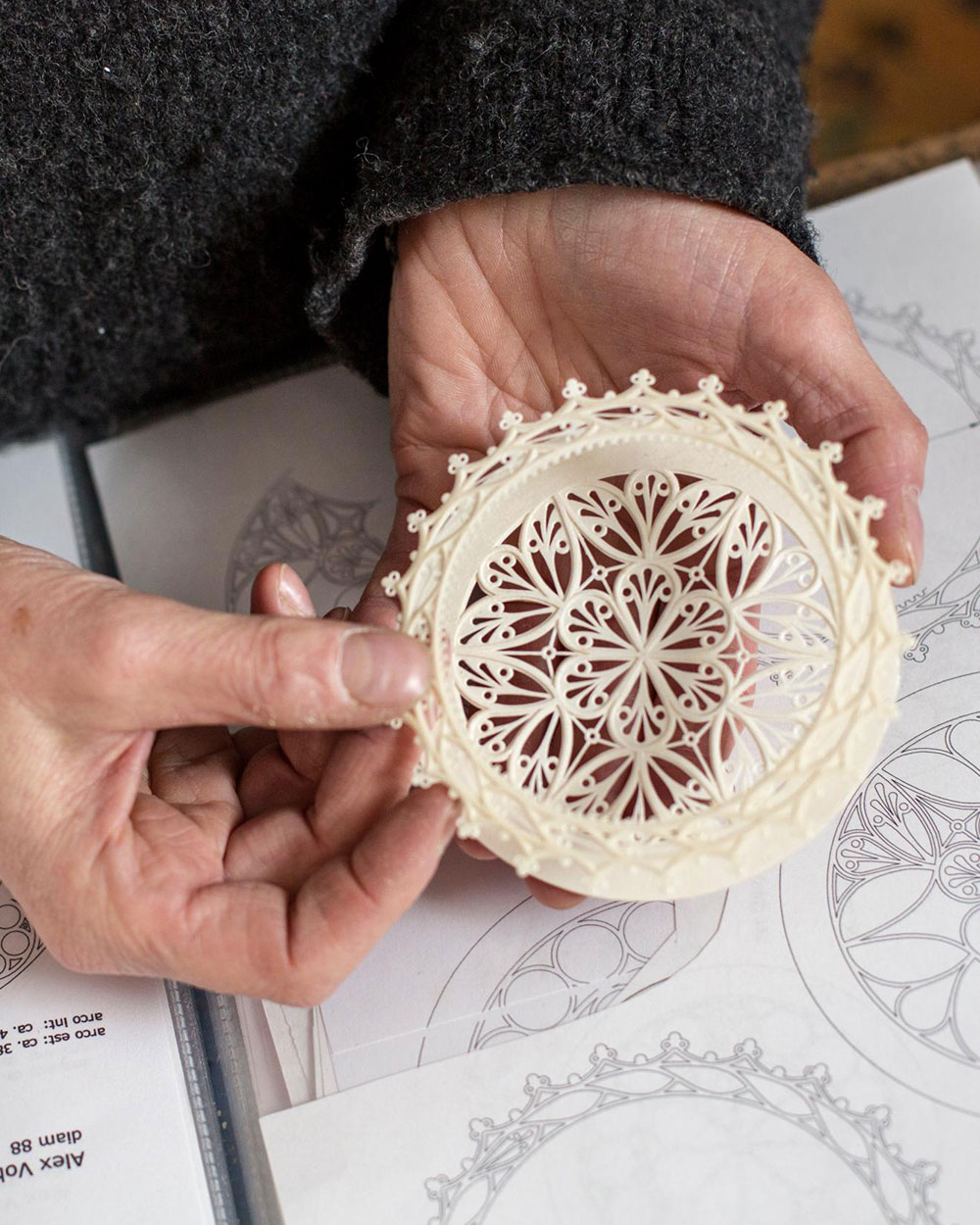 The Foundation / Reflections
Posted on September 7, 2018
Finding time for excellence
by Franco Cologni
The Foundation / Reflections
Posted on September 7, 2018
Finding time for excellence
by Franco Cologni
Artistic crafts require time. You cannot become a master without spending hours, days, years honing your gestures and constantly improving. Homo Faber is intended to be a celebration of the slow, solemn and fascinating timescales of artistic crafts; this is a message perhaps going against the trend with respect to the supersonic speed of technology, but for this reason all the more poetic and human.
If you read Shakespeare’s Romeo and Juliet, you realise that the youngsters are in a great hurry. Tybalt is in a hurry to expel Romeo from the house of the Capulets, Juliet is in a hurry to marry, Romeo is in a hurry to steal a kiss from Juliet and then begin his life with her... the older characters, on the other hand, are slow: the Nurse takes ages over her stories, Friar Laurence does not see Romeo’s banishing from Verona as a calamity because he knows that there is time for everything.
Artistic crafts are a constant invitation to reflect on the time “necessary”: the time necessary to create, to realise, and also the time to enjoy these marvellous objects. When we are young we are in a hurry with everything: also with becoming masters. We are in a hurry to grab hold of our dreams and make them real. Life is there to be built and there is never enough time to do it.
Whereas the art masters teach us that we need to learn to allow ourselves more respectful rhythms, because if we want to achieve excellence we cannot do otherwise.
If we want to have the great privilege of growing old as the objects created by the great art masters grow old: slowly, and gracefully.
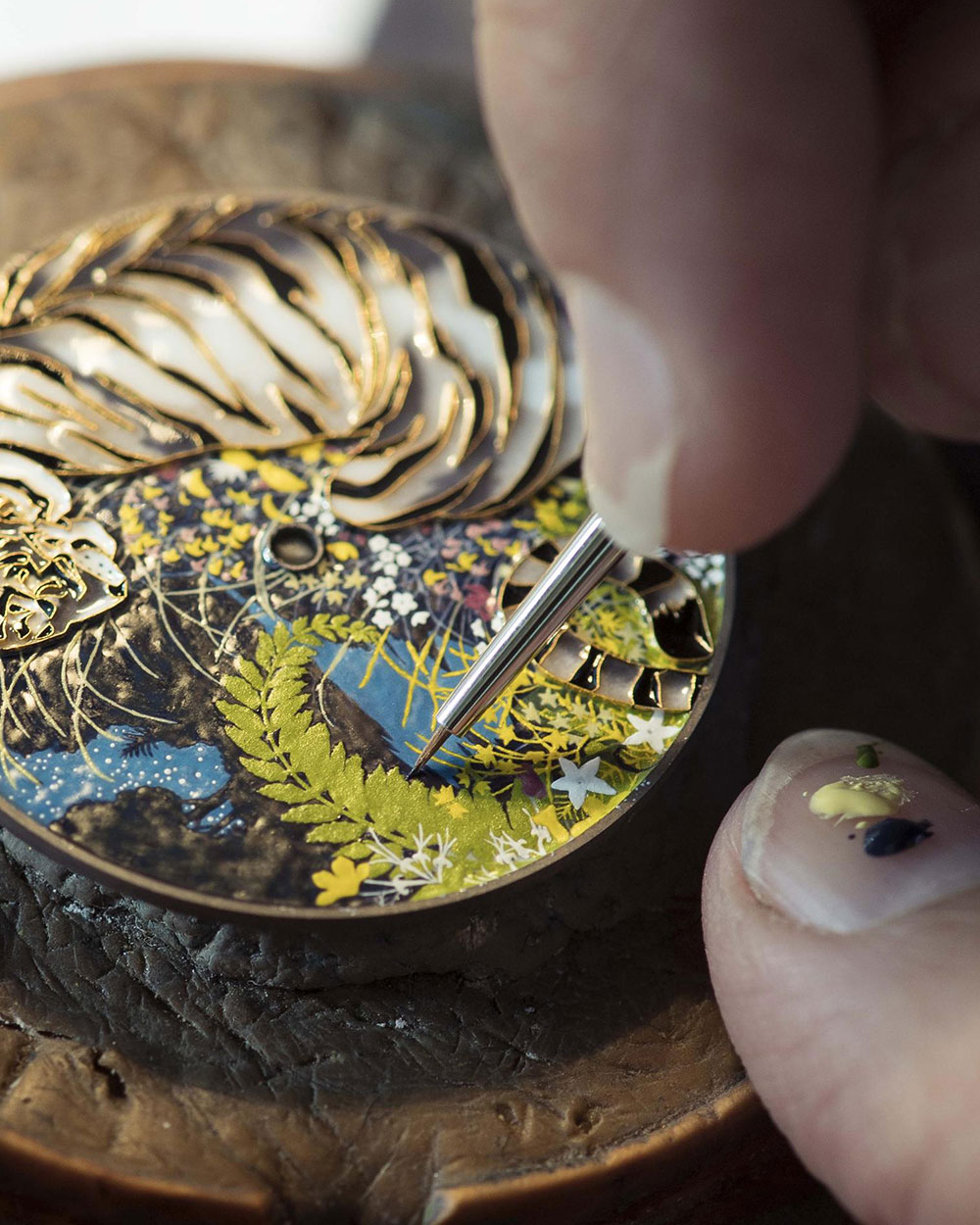 The Foundation / Reflections
Posted on August 15, 2018
What humans can do better than machines
by Johann Rupert
The Foundation / Reflections
Posted on August 15, 2018
What humans can do better than machines
by Johann Rupert
A few years ago when asked to deliver the keynote speech at the FT’s Business of Luxury conference in Monaco, I thought deeply about the message that needed to be conveyed and the audience was no doubt surprised that the subject was not e-commerce. “Clicks versus bricks” was not on the agenda because that issue was dwarfed by something far more important and widely relevant: the advent of artificial intelligence (AI) and the second machine age and its impact on the future of our world.
There are those who assure us that artificial intelligence is not a threat to society, but when machines can do everything from checking us out of supermarkets and driving us around, to analysing x-rays and diagnosing disease, it strikes me as irresponsible not to consider the alternative view. Even if the optimists turn out to be right – and it is certainly hoped they do – it only makes sense to assess the dangers of AI, especially those related to unemployment, and to ask ourselves: what can humans do better than machines?
For centuries, master artisans all over Europe have laboured at creating stunning creations: architecture graced with unrivalled stone masonry; woodwork sculpted into the loveliest shapes; fabrics and leather items one can possess for so many years that they feel like old friends; porcelain, glass and ceramics encompassing tradition and reflecting the environments from which they spring.
Europe has an incredibly diverse and talented body of master artisans which provides a straightforward answer to the question of what humans can do better than machines, and Homo Faber brings together just a fraction of this distinctive group of professions. The men and women who have contributed to this unique exhibition are a refreshing, inspiring alternative to robots and a world without work. They are also a beacon for our young generations which are also present in the exhibition in the role of Homo Faber’s Young Ambassadors.
And it’s fitting that this alternative view, one so steeped in beauty and intelligence, should be presented in Venice, a crossroads of culture and bastion of all things beautiful.
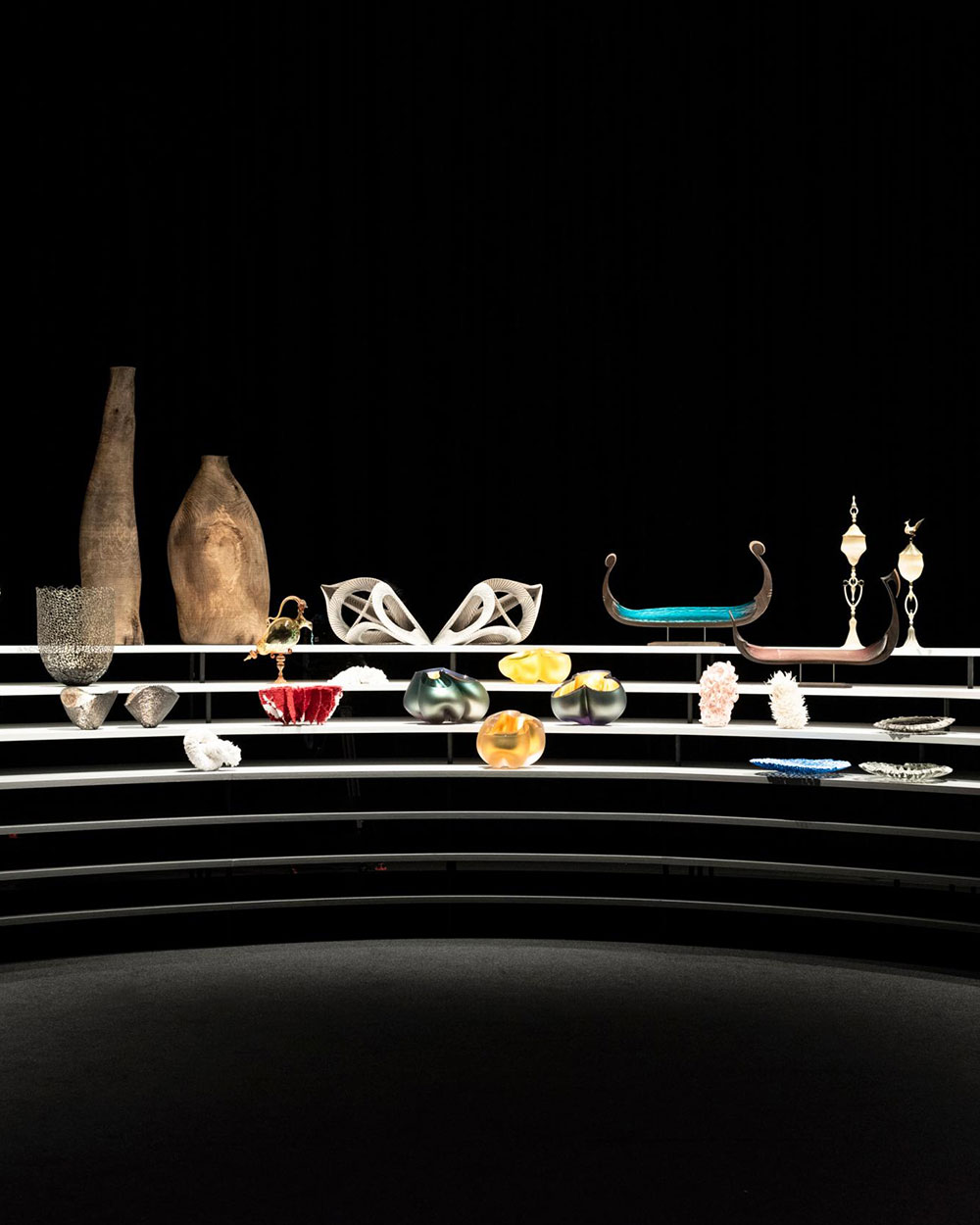 The Foundation / Reflections
Posted on July 30, 2018
The fine line between art and craftsmanship
by Franco Cologni
The Foundation / Reflections
Posted on July 30, 2018
The fine line between art and craftsmanship
by Franco Cologni
The senators of ancient Rome were accustomed to wearing a very simple robe, albeit a precious one, with a red line close to the hem: this was not too showy a sign, yet it was sufficient to identify Senators as the “chosen ones”, those who are on another level. This idea that distinction and difference are often a question of fine or blurred lines, narrow divides, is associated with a concept of elegance and beauty that has nothing to do with ostentation: rather, it is an evolved cultural and aesthetic approach that associates concepts such as ‘beautiful’ with ideas of originality, distinction, election and rarity.
The distinction between art and craftsmanship is often placed along this same fine line. All the objects on display at Homo Faber: Crafting a more human future pose the question to visitors as to whether they belong to one field or the other. Decorative arts or applied arts, a free creative expression or a wise reflection on the potential of the material… these objects make their powerful voices heard and reflect the hands, gestures and minds of those who have shaped them.
The divide is narrow, of course: but it does exist. Visitors are called upon to ask questions, but not to be confused: at Homo Faber some of the greatest artisans in Europe will be present, people who in fact define themselves as ‘artisans’ (not artists) and associate a decorative or functional aim with their works, in addition to a symbolic or aesthetic one.
The aim of Homo Faber is to promote and protect the work of these makers of marvels, who are often hard to find because they are rather unaccustomed to mass communication. As curator Jean Blanchaert has reminded us, we can visualise the image of an aeroplane that is about to plunge downwards, but thanks to a skilled and brave movement by the pilot, who regains control of the joystick, the plane succeeds in flying again. This is exactly what Homo Faber proposes to do: to make these works ‘soar upwards’ again, contributing to saving them from the risk of disappearance that sometimes seems tangible.
Visitors are called upon to be the protagonists of this ‘flying manoeuvre’: it is they, in fact, not us, who can and must reverse the downward trajectory. We want them to feel not only full of admiration for the beauty of the techniques and objects, but also part of an important cultural movement. Like the thin red line of the Roman Senators, the line that divides the excellent from the everyday becomes a sign of distinction marking out those who believe there will always be something that people’s hands will know how to do better than any machine.
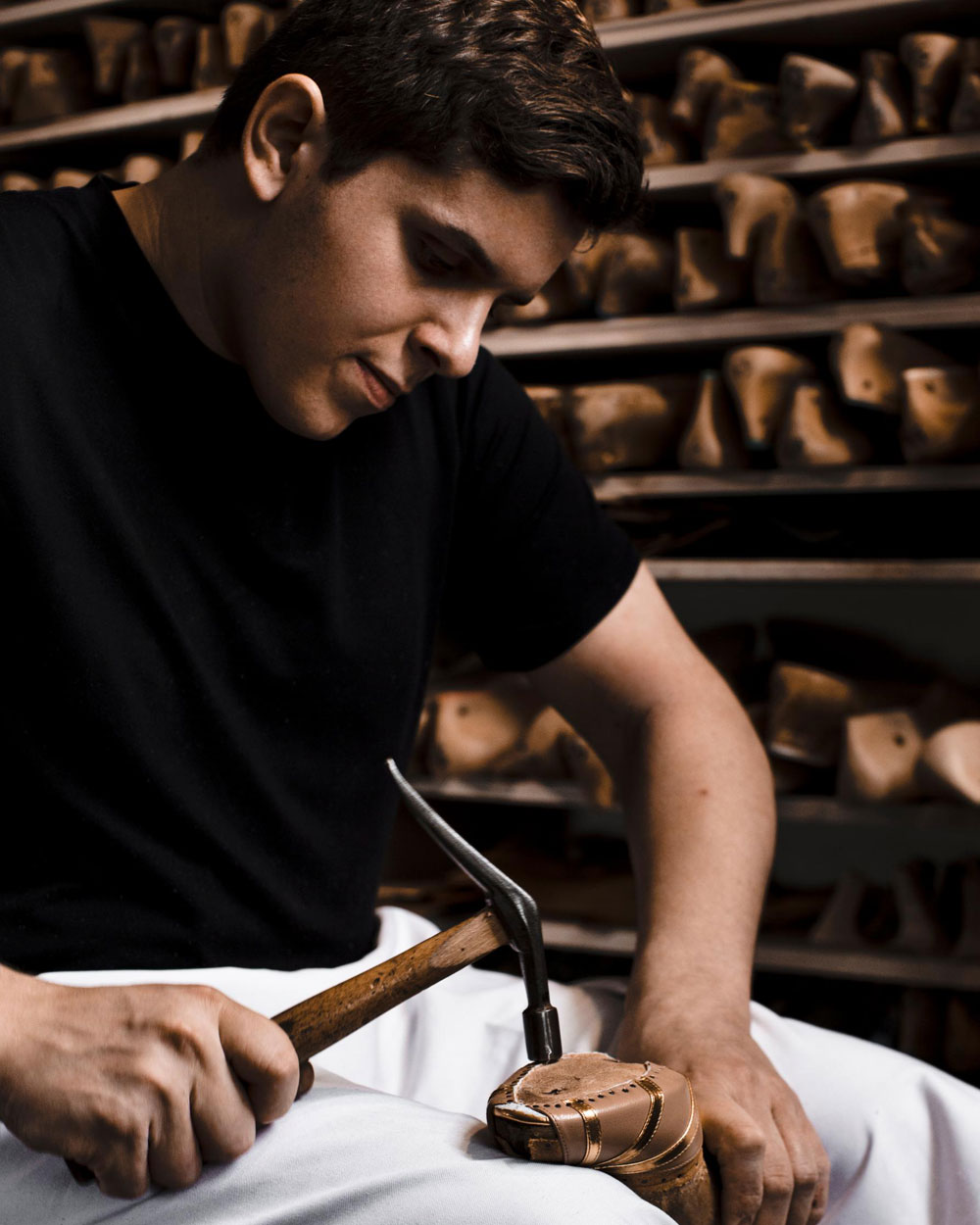 The Foundation / Reflections
Posted on July 18, 2018
Rediscovering the value of craftsmanship
by Johann Rupert
The Foundation / Reflections
Posted on July 18, 2018
Rediscovering the value of craftsmanship
by Johann Rupert
If we had to find one word to capture the spirit of this young century so far, that word would most likely be “exponential”. Among other things, the rate at which wealth can be acquired is faster than at any time in recent history and with this has come a rapid growth in the business of luxury. For those of us in this sector, it means we have been and remain extremely fortunate.
Exponential growth has also carried with it a few losses though. When it comes to luxury, one of them, quite simply, is fun: the fun of discovery. Today, whether you are walking down Bond Street in London, Montenapoleone in Milan, Ginza in Tokyo or Fifth Avenue in New York, you find for the most part the same beautiful stores with the same beautiful products. Unfortunately, the smaller, individual creators of products of lasting beauty can no longer afford a presence in these prestigious areas.
And this is the more important loss: the values that the individual creators represent and carry with them. These values are a unique blend of culture, heritage, excellence, mastery of skill, creativity and – very importantly – the relationship between the maker of an object and its owner. These values encompass an extremely high level of human mastery of techniques and materials and this mastery takes years of dedication to acquire, cultivate and transmit.
Homo Faber is a salute to these values. It is a way to hold them up, to honour and reinforce them, and to celebrate and encourage those who remain committed to them. The way in which our society today regards master craftsmanship is largely uninformed and even negative. Rock stars and sports heroes are venerated while someone who can transform raw material into a gorgeous, useful product with their own two hands is for the most part entirely disregarded. Homo Faber quite boldly wants to reverse such a view and, in the process, to begin – together with anyone and everyone who understands and agrees with our perspective – to craft a more human future.
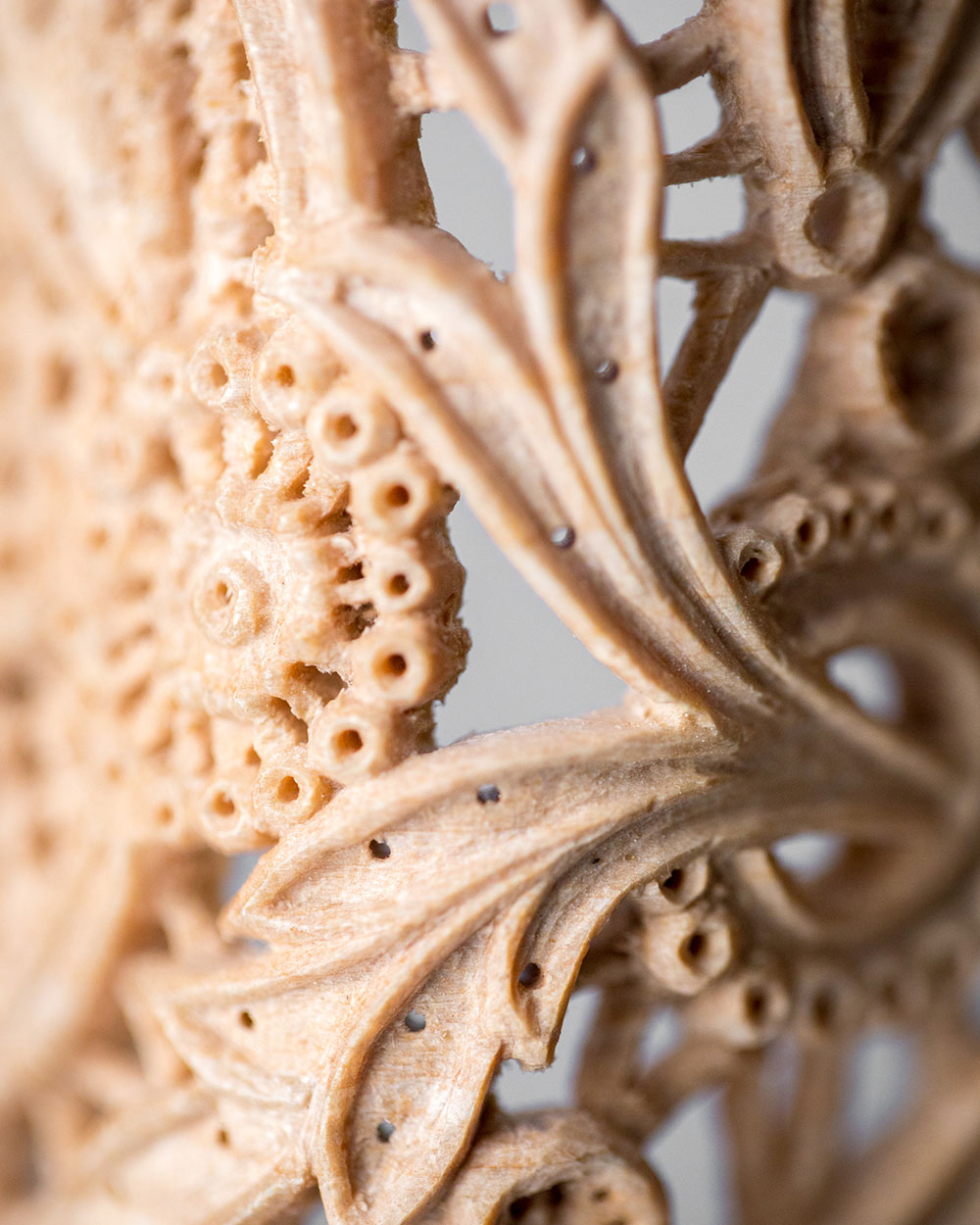 The Foundation / Reflections
Posted on May 29, 2018
Homo Faber: Crafting a more human future
by Franco Cologni
The Foundation / Reflections
Posted on May 29, 2018
Homo Faber: Crafting a more human future
by Franco Cologni
Homo Faber: Crafting a more human future will be an unprecedented celebration of the authentic, original and unique beauty represented by the creations of master craftsmen. The exhibition will thus be an opportunity to reflect on the different characteristics that we normally equate with beauty. There are, in fact, some characteristics that a certain culture, or rather, a distorted culture, associates with an idea of beauty that seems fake and ephemeral: the mere fact of being famous and successful seems to be enough to transform a person who has no merit other than popularity into someone fascinating and interesting. Even the mere fact of being “fashionable” is often considered sufficient, in itself, to confer an aura of beauty: this is profoundly wrong and leads to confusing approval with taste, and banality with identity.
There are other elements of beauty that seem to have been eclipsed, or in any case obscured. I am thinking of words such as grace, intelligence, elegance... Grace is a source of beauty: the fruitful dialogue between creativity and know-how, between design and fine craftsmanship, perfectly mirrors the need to create objects that are graceful because of their refinement and purpose, gentle in the way they evoke an authentic emotion and profound in their meaning.
The same considerations apply to the term elegance, which is always and only a feature of people, and which can be found all around us, made visible by the tasteful choices we make. Graceful movement, unpretentious naturalness, lack of affectation, proper posture and poise, the right tone: these characteristics are all associated with elegance, but they are also – as can be easily understood – inherently connected with one’s beauty, which makes all the difference. Therefore to redefine terms such as grace and elegance when describing an object that is made-to-measure, by hand and with passion will enable us to distance ourselves from an increasingly blatant vulgarisation of the concept of beauty. And if we are careful and curious, we will manage to understand the value of a handmade object that is not only wonderfully shaped, but also born of an elegance that is spontaneous and humanly touching: the elegance that belongs to genuine masters and great creative minds. A dialogue between enlightened minds that always makes us feel like intelligent and, hopefully, welcome participants.
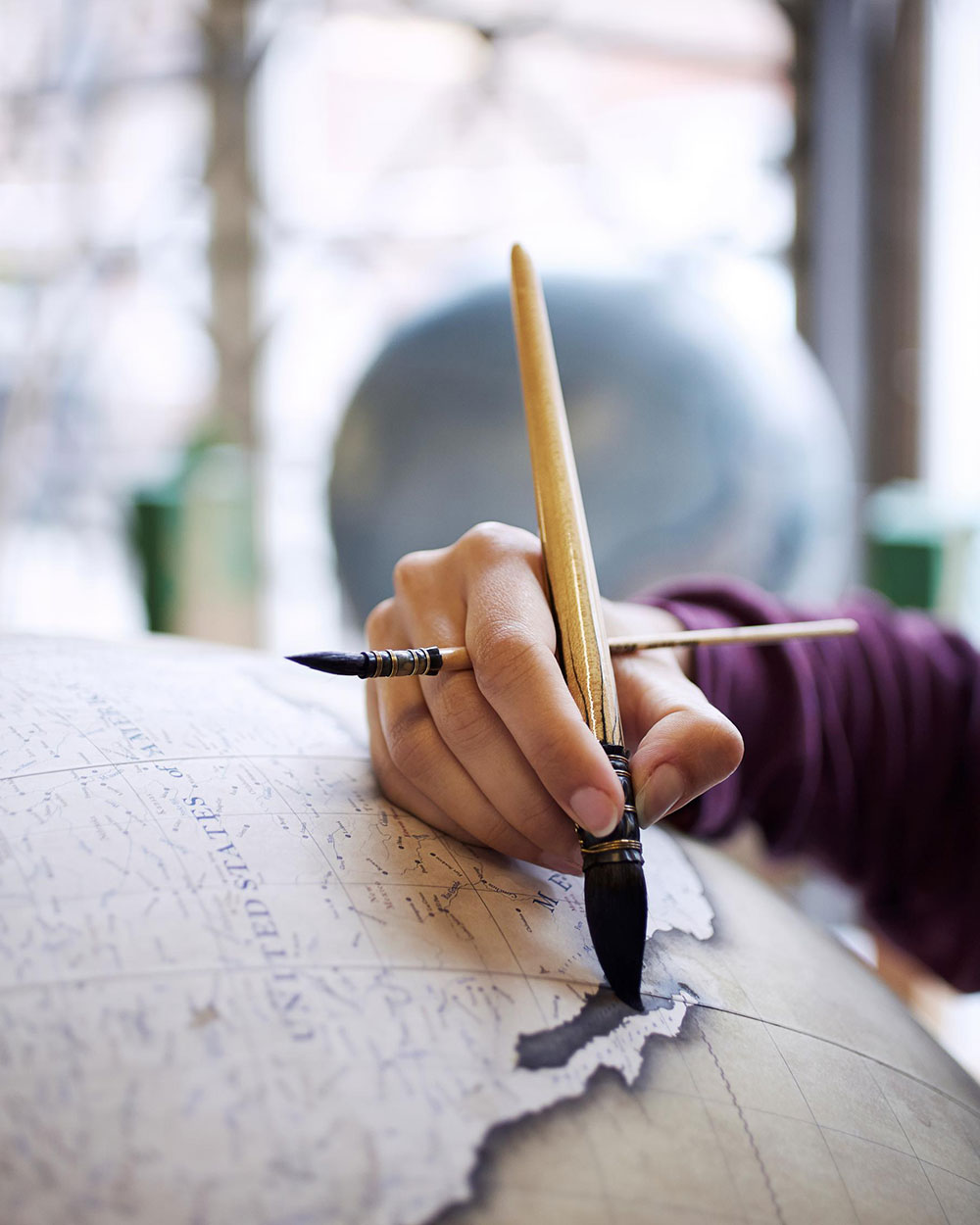 The Foundation / Reflections
Posted on March 27, 2018
In the footsteps of Michelangelo
by Franco Cologni
The Foundation / Reflections
Posted on March 27, 2018
In the footsteps of Michelangelo
by Franco Cologni
The purpose of the Michelangelo Foundation for Creativity and Craftsmanship is to revitalise, initially in Europe and subsequently on a world scale, the precious heritage of creativity and fine craftsmanship.
Conceived by Johann Rupert, enlightened South African entrepreneur, and founded by him and myself in Geneva (an international city par excellence), the Michelangelo Foundation is quickly becoming the link that was lacking between associations, institutions, foundations and other cultural bodies across Europe that are engaged, at various levels, in the promotion of artistic crafts.The very choice of the name Michelangelo is emblematic. The supreme master lived at a time when Italy was just a cultural notion. Outstanding artist and highly skilled artisan, the “Divine” Michelangelo is the eloquent emblem of the heights that talent can attain through the fortunate meeting of art, technique and, of course, the client or patron. For the Michelangelo Foundation, promoting, protecting and perpetuating artistic crafts is important also to secure adequate employment to tomorrow’s talent and, at the same time, to ensure that the new elites will have access to the wonderful objects that give value to our choices.
Fine craftsmanship is the expression of a territory, of the history and evolution of our times, and it can also be an important vehicle of culture and work. At a time when technology seems to be replacing the human hand everywhere, the Michelangelo Foundation is engaged in the promotion of what only talent, workmanship and creativity can so splendidly achieve.
In this way, fine craftsmanship can be saved from the standardisation often brought about by digitisation. For this reason, the Michelangelo Foundation is implementing some original projects that combine various initiatives in an ideal creative course. Like networking, to connect and promote different realities and activities in order to create effective synergies. Another tool is the definition of a common vocabulary to talk about artistic crafts and define excellence. Hence the publication of the volume “The Master’s Touch. Essential elements of artisanal excellence”, which was recently presented in London, Paris and Eindhoven. The Michelangelo Foundation also encourages the relationship between design and craftsmanship through projects such as “Doppia Firma” (doppiafirma.com).
Moreover, the Foundation fosters the diffusion of the know-how of great European craftspeople through meaningful events such as Homo Faber, an unprecedented celebration of skills at the highest level that will take place in Venice in September.
The new Michelangelo wants to be free to create tomorrow’s beauty. Thus the Foundation bearing his name works, plans and develops projects that will allow every Michelangelo - inspired not only by torment but also by ecstasy - to make our lives better thanks to his or her talent.
 Posted on July 8, 2020
A Well Crafted Life
Posted on July 8, 2020
A Well Crafted Life
When I take the time to ponder on what constitutes A Well Crafted Life, a myriad of elements come to mind which need to all balance harmoniously.
More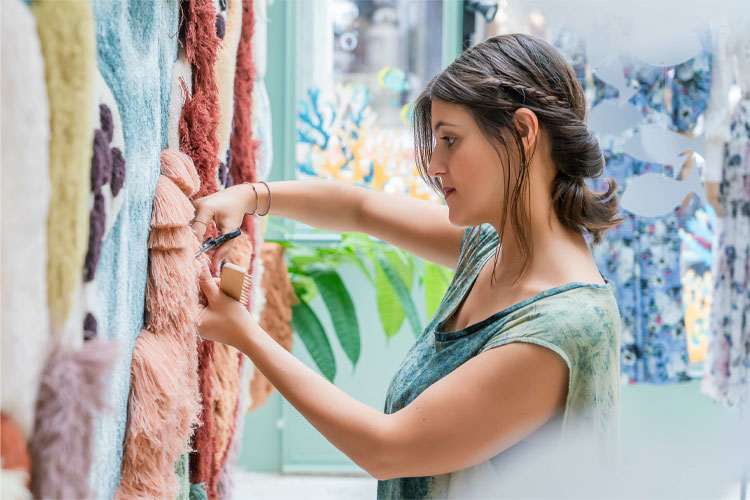 Posted on May 5, 2020
Curiosity and Creativity
Posted on May 5, 2020
Curiosity and Creativity
As spring blooms and we start to see a glimmer of hope and flicker of light at the end of this dark tunnel, I would like to reflect on this moment in time.
More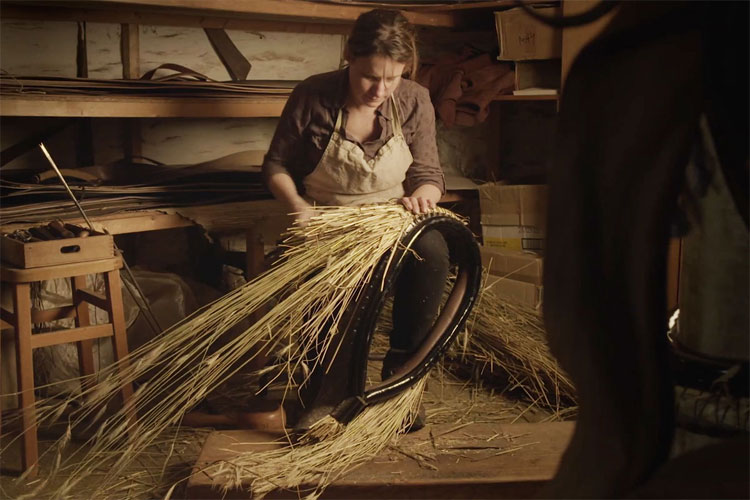 Posted on March 4, 2020
A European Red List of Endangered Crafts
Posted on March 4, 2020
A European Red List of Endangered Crafts
When we think of ‘endangered’ it tends to evoke endangered species on our planet; whether that be plants or animals.
More Posted on December 5, 2019
A Beacon for Fine Craftsmanship
Posted on December 5, 2019
A Beacon for Fine Craftsmanship
Michelangelo Foundation’s role in promoting fine craftsmanship is as significant as ever.
Read More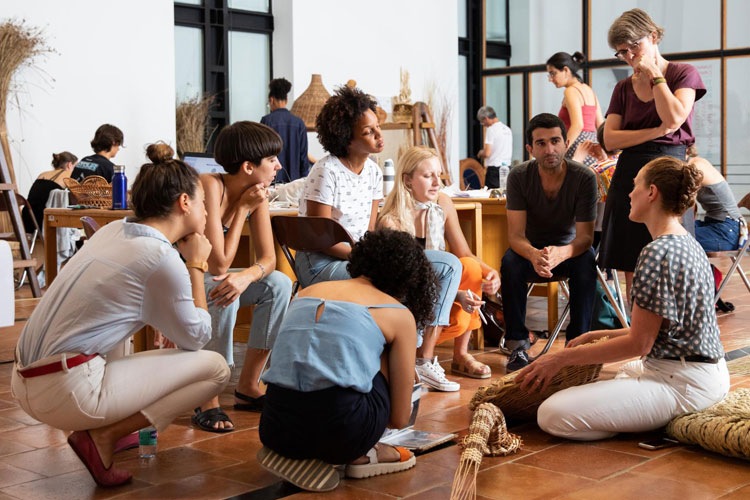 Posted on October 30, 2019
The Ready Hand
Posted on October 30, 2019
The Ready Hand
The transmission of knowledge from a master to a young artisan is a very human act.
Read more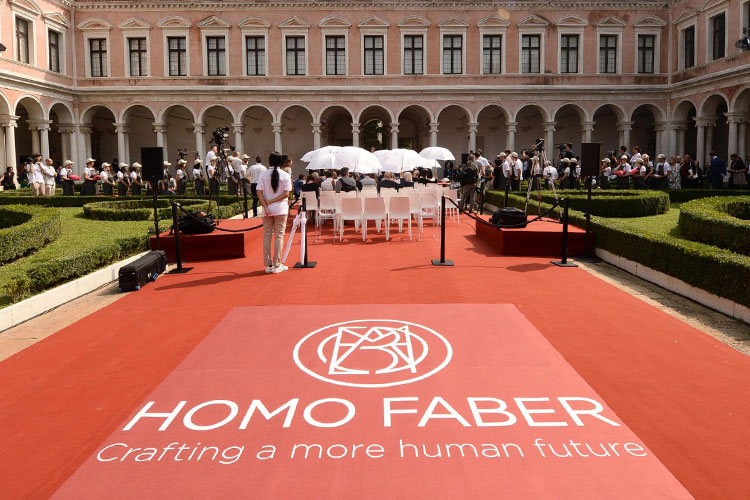 Posted on September 26, 2018
Franco Cologni's inaugural speech
Posted on September 26, 2018
Franco Cologni's inaugural speech
Franco Cologni’s speech during the opening ceremony of the first edition of Homo Faber
Read more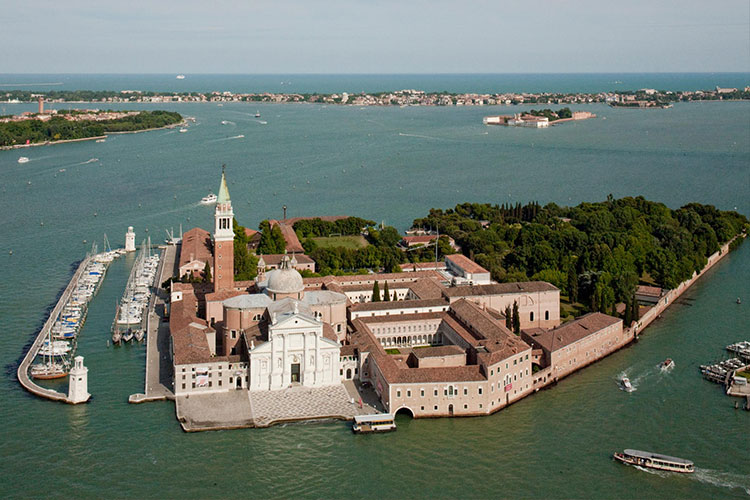 Posted on September 26, 2018
Johann Rupert's inaugural speech
Posted on September 26, 2018
Johann Rupert's inaugural speech
Johann Rupert’s speech during the opening ceremony of the first edition of Homo Faber
Read more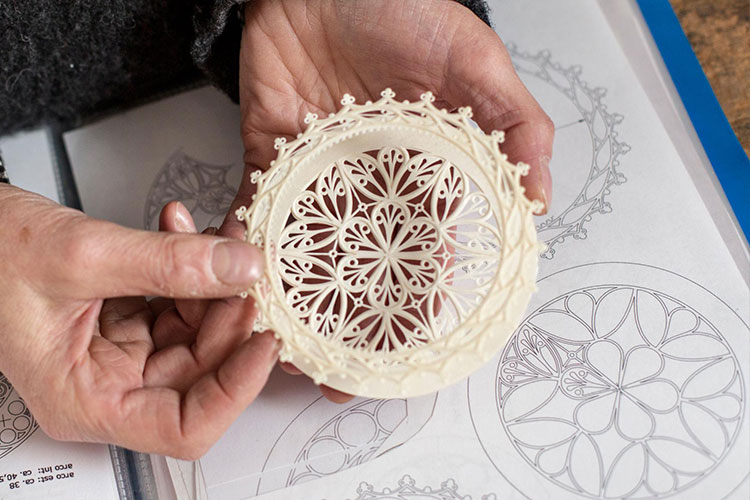 Posted on September 7, 2018
Finding time for excellence
Posted on September 7, 2018
Finding time for excellence
Why we should take a lesson from the great masters and live at a slower rhythm
Read more Posted on August 15, 2018
What humans can do better than machines
Posted on August 15, 2018
What humans can do better than machines
Homo Faber provides an alternative to a future shaped by artificial intelligence
Read more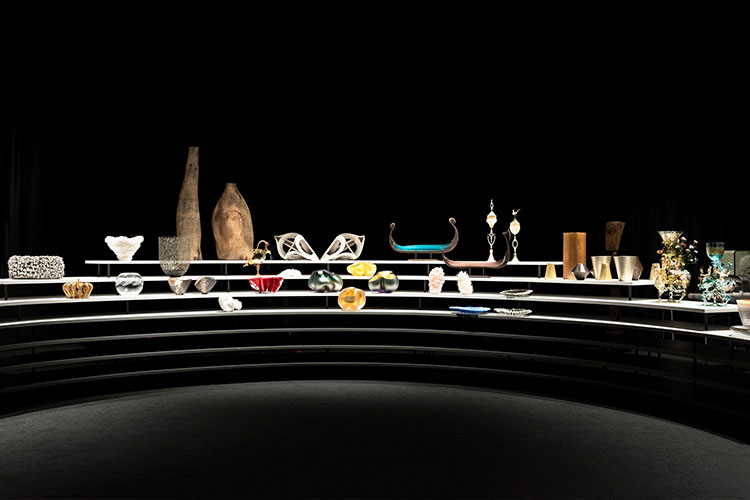 Posted on July 30, 2018
The fine line between art and craftsmanship
Posted on July 30, 2018
The fine line between art and craftsmanship
Why a new cultural movement is needed to make craftsmanship soar again.
Read more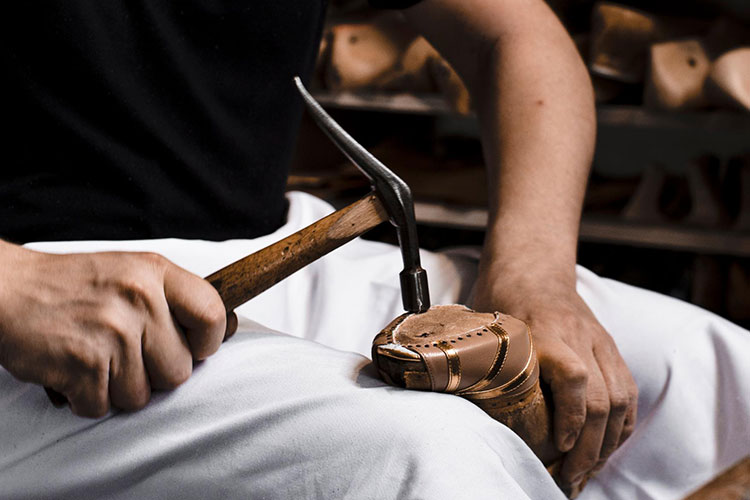 Posted on July 18, 2018
Rediscovering the value of craftsmanship
Posted on July 18, 2018
Rediscovering the value of craftsmanship
How Homo Faber salutes the values of handmade creations.
Read more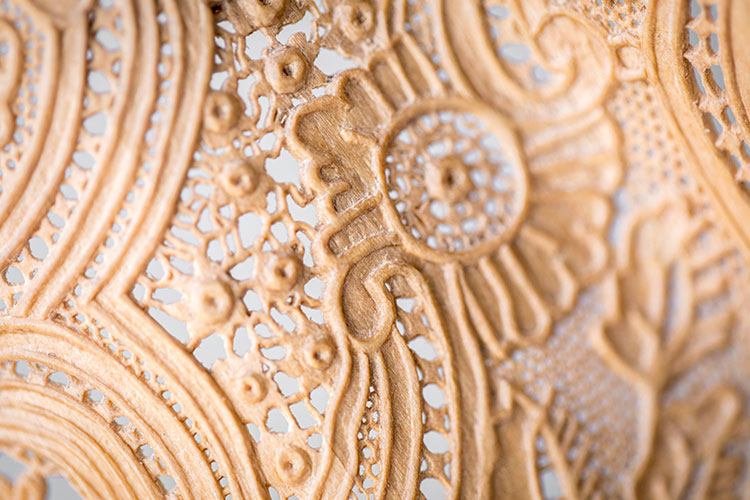 Posted on May 29, 2018
Homo Faber: Crafting a more human future
Posted on May 29, 2018
Homo Faber: Crafting a more human future
Why the value of handmade helps us redefine what beauty means in today’s world.
Read more Posted on March 27, 2018
In the footsteps of Michelangelo
Posted on March 27, 2018
In the footsteps of Michelangelo
Why the Michelangelo Foundation is working to promote the unique abilities of the human hand.
Read more


